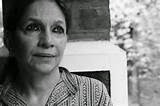By Archita Suryanarayanan
Sushma Somasekharan appears poised and confident; her love for music is evident in the enthusiasm with which she talks about her art. Twenty seven years old and a public accountant by training, Sushma is a first generation musician – quite a rarity in the classical music circles of today.
Born in Singapore, Sushma trained there in Carnatic music under the tutelage of Bhagya Murthy. She moved to India in 2009 to pursue music full time, and came under the training of Lalitha Sivakumar, daughter-in-law of D.K. Pattammal. A graded AIR artist now, Sushma has performed at many major venues, including the Esplanade-Theatres on the Bay, Singapore.
Sushma shares her views and experiences on music, lyrics, career choices, Tyagaraja, and more.
When did you start learning music and what was it like then?
I began music lessons at the age of four. I did not really know what I was doing; I was just yielding to parental pressure. Now I am glad that my parents forced me into it as a child.
But I do wish that Carnatic music was made more accessible for beginners. Learners in the initial stages are usually lost and hardly know what they are getting into. As a child growing up in Singapore, I often hated to be bundled off every Sunday to sing Sa Ri Ga Ma of which I knew no meaning, when the rest of my contemporaries were singing Twinkle twinkle. If the music is not even easily accessible to the learners, it is difficult to expect it to be accessible to the larger public.
How do you think this accessibility can be brought about? Won’t the quality of music be diluted if made suitable for a wider audience?
Carnatic music is mostly appreciated by a niche group. It ends up becoming elitist and does not reach a wider audience. It is usually performed in sabhas, and not everybody goes to listen to this pure kutcheri format. If we bring Carnatic music out to public spaces, parks for instance, the barrier could be broken.
Another way could be by explaining the meaning of the songs. This way, people can understand the emotions and be better involved with the song. I do not think the quality is diluted in such cases, as we are not removing anything from the music itself. We are only trying to broaden the kind of venues where Carnatic music is performed.
How much importance do you attach to the lyrics in music?
To me, lyrics are extremely important. They help us emote accordingly, and communicate the nuances better. Subramania Bharati’s songs of love sound better to me after I understand the meaning and emotions. Tyagaraja’s songs have almost a conversational tone with Rama, the understanding of which helps me render the composition more effectively.
The listener often may not know the meaning of the song. But I think it is important for at least the singer to know the meaning so that she can communicate the emotion to even those who do not know the language.
Many Carnatic musicians are highly qualified in other fields like mathematics and engineering, which is not so common in Hindustani music. You have studied to be a public accountant. Why do you think this is so?
(Laughs) It is a question of cultural anthropology. If I may say so, south Indians tend to give a lot of importance to a formal degree. And we tend to play safe, have a ‘back up option’ in case music does not work!
This is quite an advantage because music is freedom and sometimes you may lose focus. The engineer in you gives you a discipline in thought that can help you structure your music too. Also, having a mainstream career helps build your confidence, in the way you interact with people.
You left your corporate job to pursue your passion. How did this decision come about?
In 2004, I spent six months in India and started training with Lalitha Sivakumar. Until then music was just a hobby. It is only at my guru’s class in Chennai that I saw how music was for many of the other students – a way of life. People from smaller towns were learning from her because of their passion for music, and I realised how I had been pursuing it in such a casual manner. Soon after, I decided I wanted to make music my way of life too.
Did the thought of a financially unstable career ever scare you?
On several occasions! It was scary in the beginning; I was in a new country where I did not have many friends, but the intangibles made up for all that. I had an understanding family, and I got grants from the Singapore Government.
Also, I realised I was not the only one doing this – there were several others who had quit high paying jobs and left other lives to pursue music. So we gained our strength from each other.
Do you get non-Indian audiences when you perform in Singapore? What is it like to convey Indian classical music to the uninitiated?
We have started attracting Chinese and Westerners in our recent shows,. The themes and anecdotes we select are not strictly religious, and hence we manage to make it appealing to all. For instance, in one of our shows called Samarupa, we celebrated the different forms of a woman – as a mother, as Shakti, as a lover. We used the character of Andal, a child poet, and introduced the practices of decorating houses with kolam, lining the eyes with kajal, and braiding of the hair, and linked these practices to Andal and her poetry.
Most of these themes are universal – the story of lovers, Krishna and Radha – the promiscuity and the jealousy for instance. All these ideas are quite human and can be related to by most people.
(Archita Suryanarayanan is a freelance journalist)



















